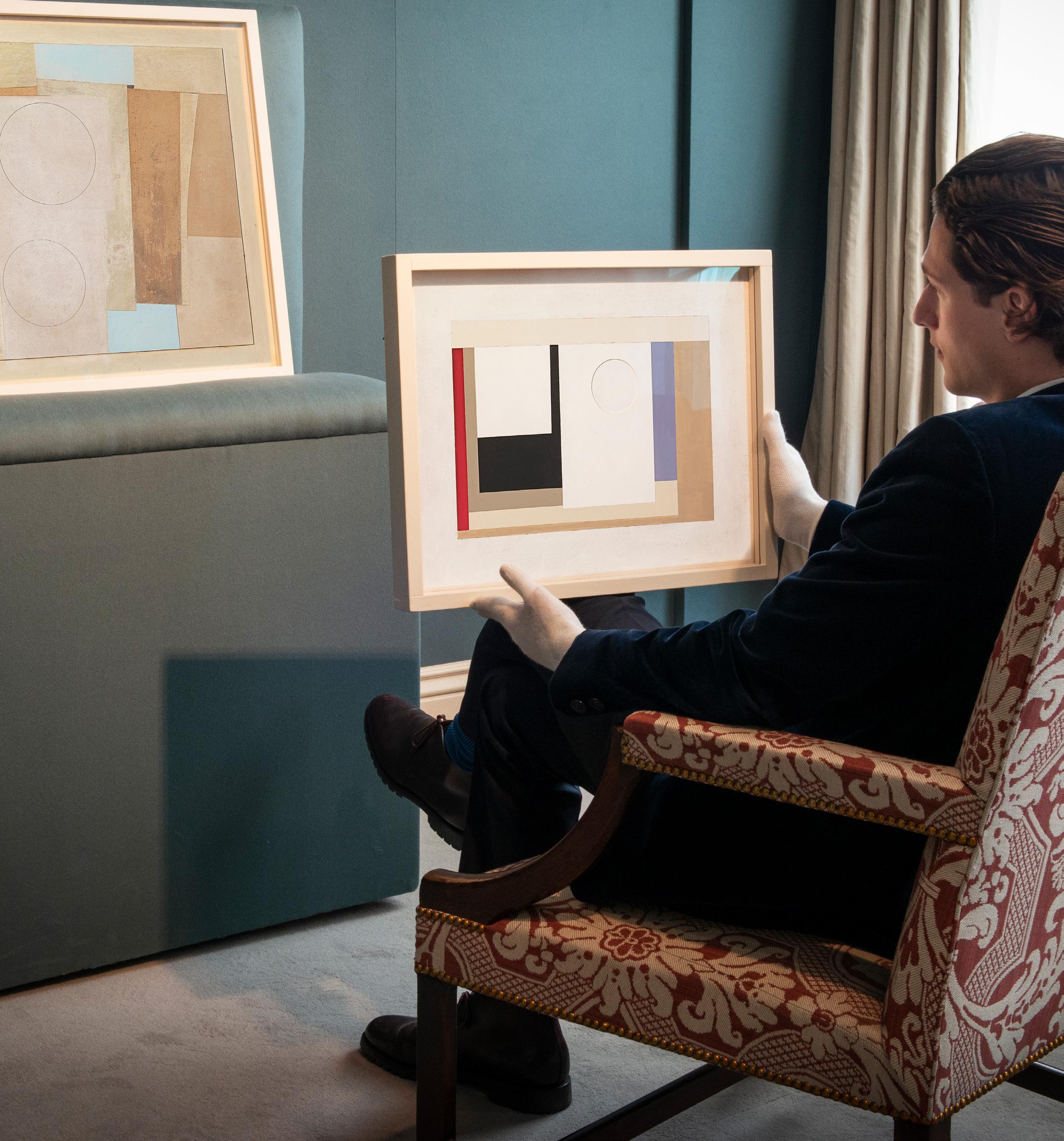Jonathan’s News




London’s Richard Green Gallery echoes the colour and exuberance of spring with a selection of Impressionist, Post-Impressionist and Modern paintings, drawings and sculpture at TEFAF New York.





London’s Richard Green Gallery echoes the colour and exuberance of spring with a selection of Impressionist, Post-Impressionist and Modern paintings, drawings and sculpture at TEFAF New York.
Henri Fantin-Latour stood apart from his Impressionist peers in his adherence to the realistic depiction of nature and a preference for working in the studio rather than en plein air Pivoines et boules de neige , 1878 , is typical of this period in his art, when he abandoned the complex still lifes of his earlier phase in favour of simpler flowerpieces set against an even, mid-beige background. These restrained, poetic assemblages were popular with his English clients. Many were sold through his English agents Edwin (1823-1879) and Ruth Edwards (c.1833-1907). Ruth Edwards owned this painting after 1898. Here Fantin chooses pastel colours, from the boules de neige (viburnum), to the pale pink peonies, to the raspberry-pink of the weigela, a shrub imported from China in the 1840s. This perhaps reflected trends in garden design and the fascination with monochromes seen for example in Whistler’s Symphony in white no.1 (The white girl) , 1861-62 (National Gallery of Art, Washington DC). Whistler had met Fantin in 1858 and encouraged him to make his first visit to London.
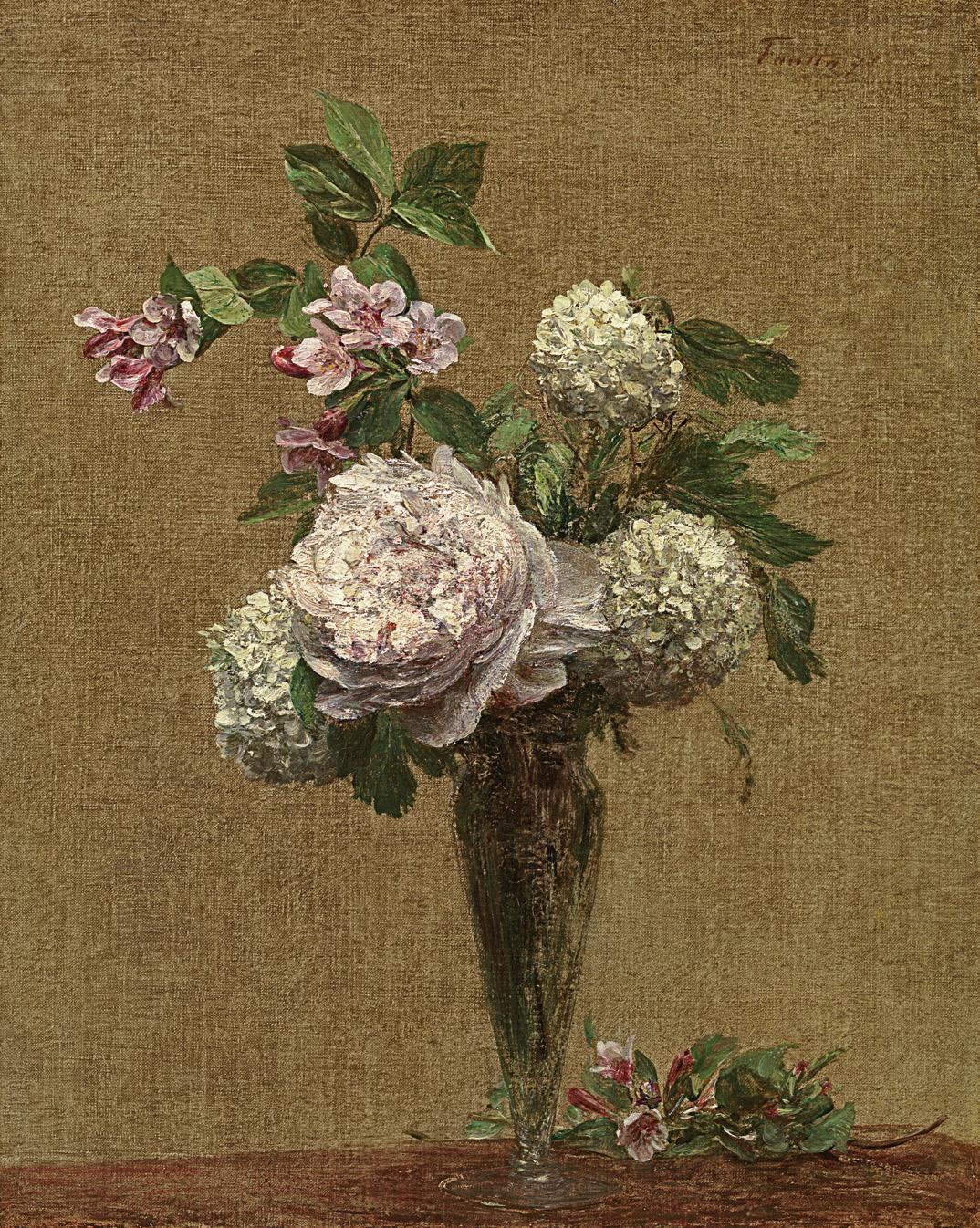 Henri Fantin-Latour Pivoines et boules de neige, 1878 Signed and dated upper right: Fantin . 78 Oil on canvas: 17 3/8 x 13 7/8 in / 44.1 x 35.2 cm
Henri Fantin-Latour Pivoines et boules de neige, 1878 Signed and dated upper right: Fantin . 78 Oil on canvas: 17 3/8 x 13 7/8 in / 44.1 x 35.2 cm
Also included is a group of works by Albert Marquet, whose Post-Impressionist landscapes are restrained and direct, with a very subtle colour palette. He lived on the banks of the Seine most of his life and documented the river in all its moods. Marquet’s Poissy, le clocher, 1929, is bursting with the exuberant greens of high summer. Marquet spent the summer of 1929 in a house on Ile Migneaux, a long, thin strip of land on a bend of the Seine opposite the town of Poissy. The leafy island had been developed in the early twentieth century by the hotelier-restaurateur Léon Chouquet. A bridge from the Poissy side encouraged the building of villas in that fanciful interpretation of vernacular architecture – complete with turrets and halftimbering – typical of holiday villas at that time. The garden of Marquet’s villa ran down to the banks of the Seine and he painted many views from the boat which was kept moored at the bottom of the garden.
Modern British highlights include Henry Moore’s remarkable Reclining figure, 1945, previously in the collection of newspaper editor and philanthropist, David Astor (1912-2001) and executed at the end of the Second World War, during which Moore became an Official War Artist celebrated for his Shelter drawings. The sculpture also calls to mind the body of a shelterer swathed in a blanket to pass the night on a platform floor. Referring to another cast of this work in the collection of the Museum of Modern Art, San Francisco, Susan Compton has suggested that the artist’s ‘direct experience of the reclining figure had been enriched by observation in the London Underground...This had led to drawings of draped figures which perhaps inspired the sensuous fluidity of the perimeter line in this sculpture. Although schematised, the figure compels response to its delicate idea of containment; its shell-like form evokes an analogy with a womb rather than with the more aggressive and bone-like formations of prewar Reclining Figures’ (cited in Henr y Moore, exh cat, Royal Academy of Arts, London, 1988, p.223).
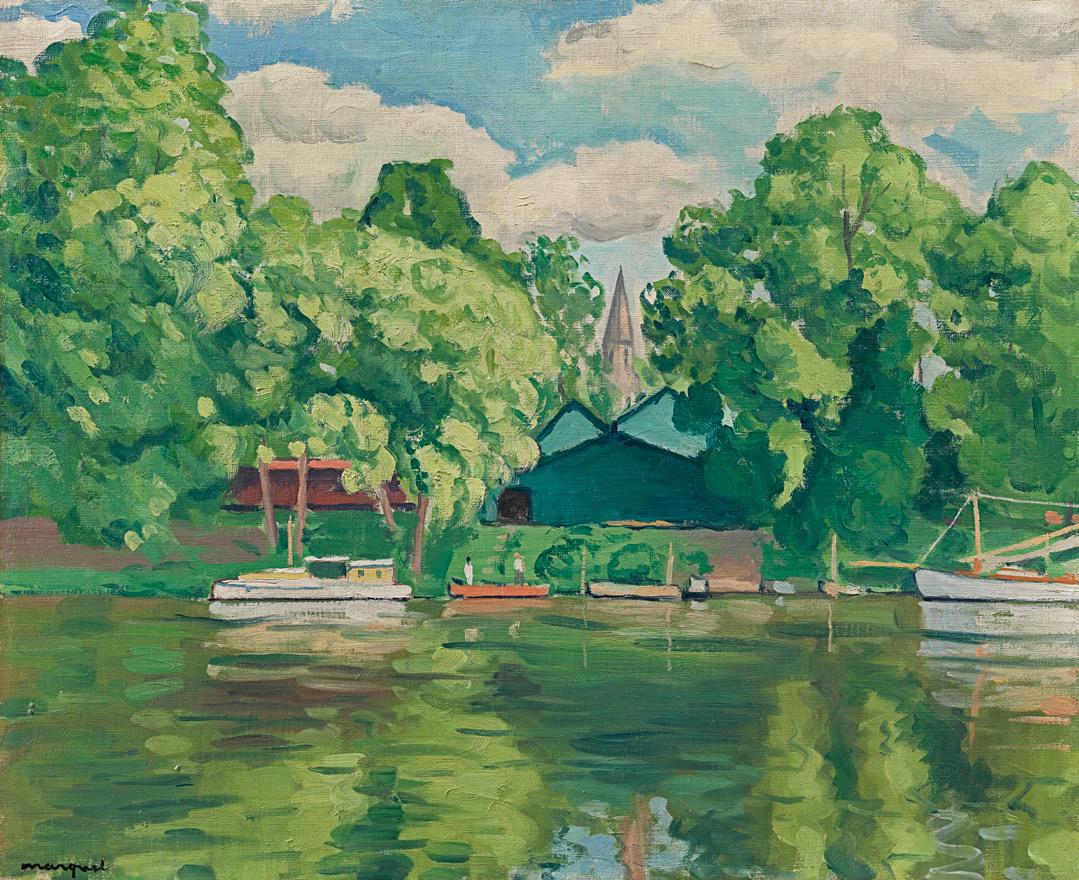
Signed
Painted
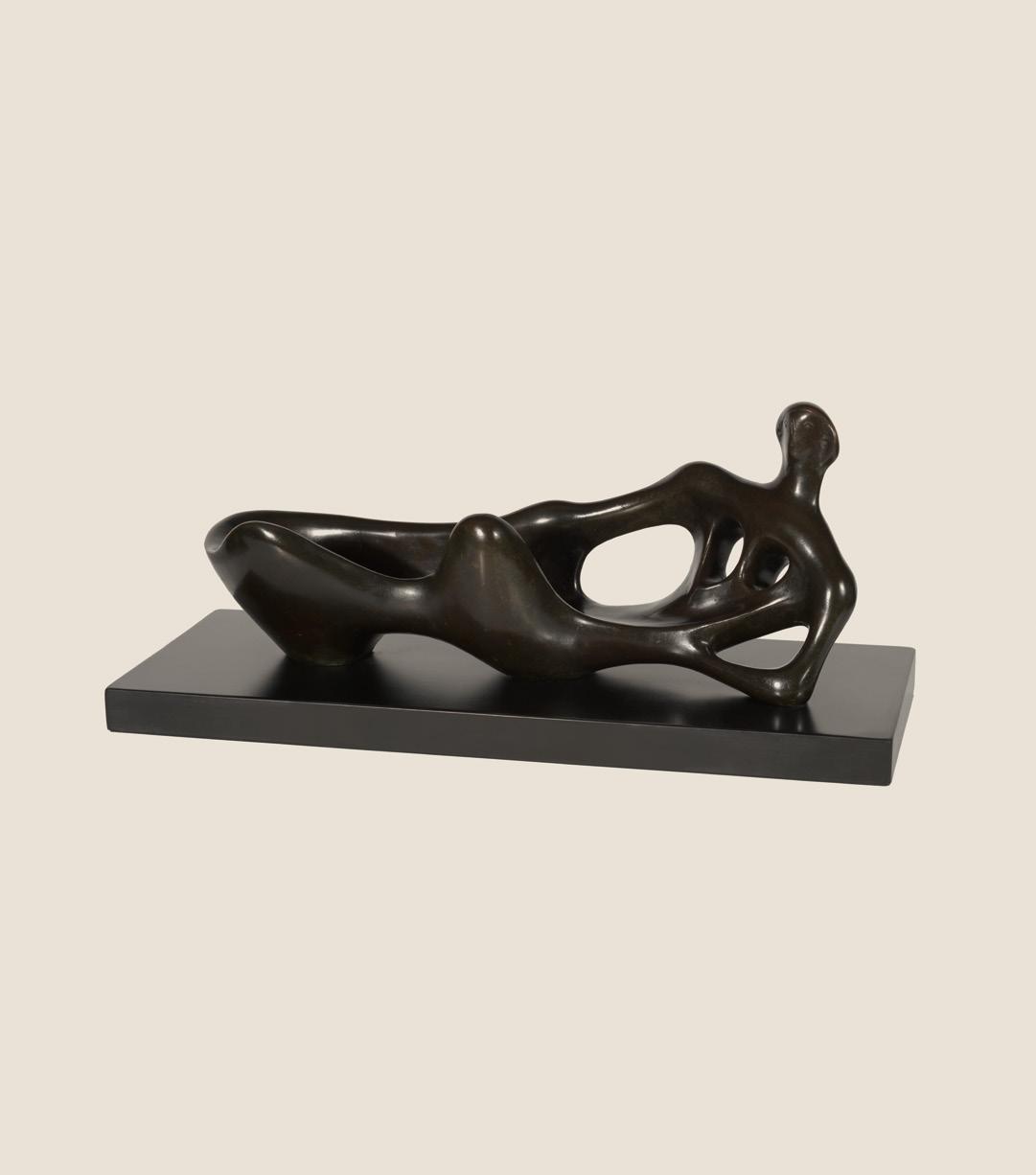 Henry Moore
Henry Moore
Another titan of British Modernism, friend and contemporary of Moore, Ben Nicholson ’s geometric abstraction is a dramatic contrast to the organic elegance of Moore’s sculpture. Nicholson’s majestic carved relief, Nov 59 (landscape with monolith) , was inspired by the beautiful landscape surrounding his new home and studio, Casa Vecchio in Ronca sopra Ascona, Switzerland, to which he moved in the summer of 1958. Nicholson wrote of the magical location and its ‘visual poetry’, with sculptural mountains visible across the translucent Lake Maggiore. Dr Lee Beard writes, ‘As with many of Nicholson’s finest artworks from this period, colour plays an essential part in evoking a potent sense of nature and human experience, in which the passing of time is firmly embedded in the materiality of the artwork.’ The reliefs
and paintings that Nicholson completed in Switzerland during the decade marked a successful consolidation of many factors that had preoccupied him throughout his career. Dr Beard continues, Nicholson was inspired by ‘the prehistoric standing stones at Carnac in Brittany, also found among the ancient ruins and rock-strewn landscapes of Delos, Olympia, and Delphi, sites which he a had spent time drawing with complete absorption during his first visit to Greece in the spring prior to completing Nov 59 (landscape with monolith) . Whilst Nicholson was adamant that the titles of his artworks were not to be read as suggestive of specific subject matter, the present work can perhaps be seen as a successful synthesis, an equivalent to the many forms and landscapes encountered by the artist during his travels across Europe at the height of his career.’
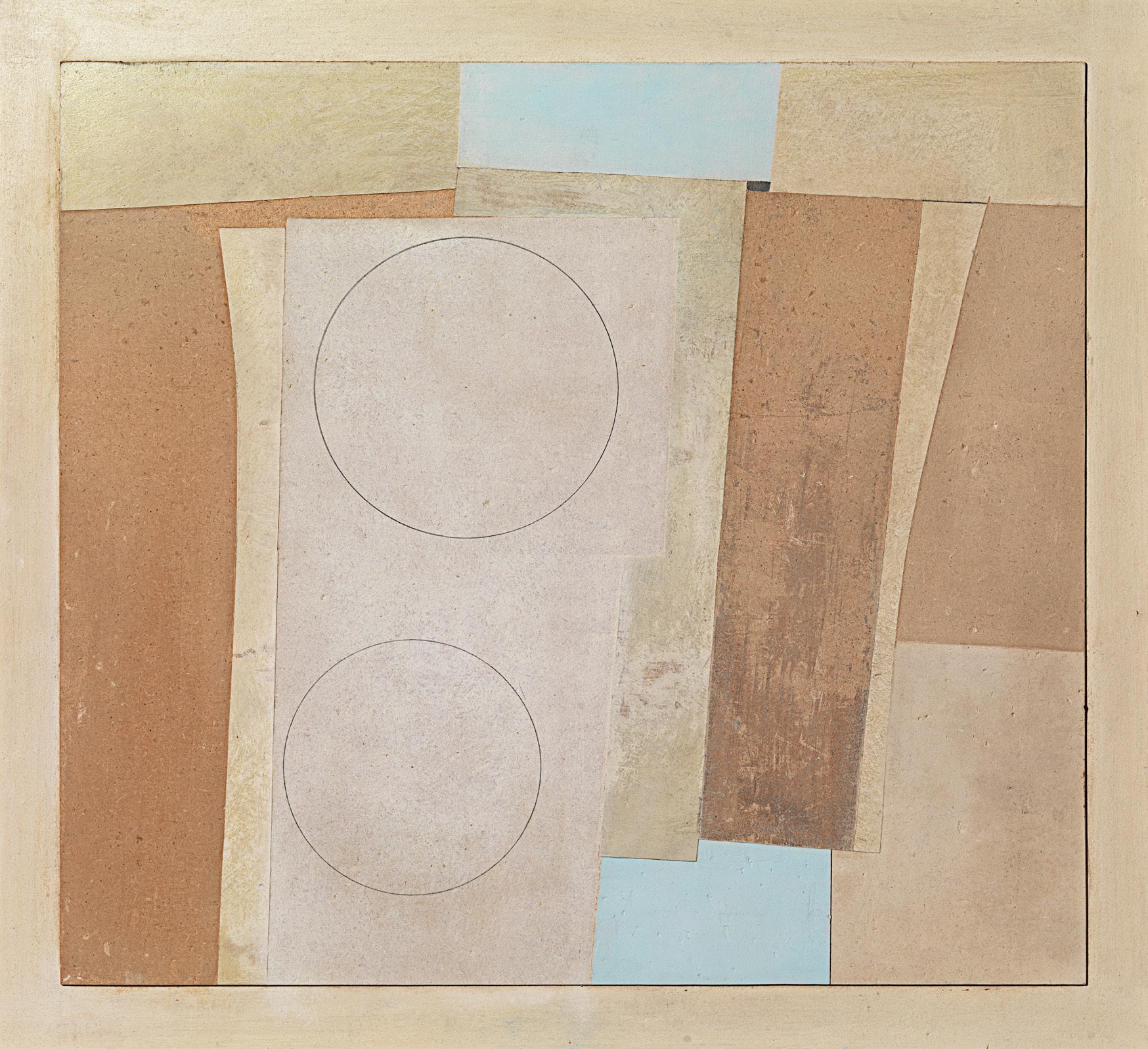
We had a very successful TEFAF Maastricht, unaffected by weaknesses in the financial markets and geopolitical turbulence. Richard Green Gallery brought a carefully-curated selection of topquality Old Master and Impressionist paintings and we sold a number of our most outstanding works. They included a still life of fruit by the celebrated seventeenth century still life painter Jan Davidsz. de Heem, which the new owner has generously lent to the ground-breaking exhibition of paintings by de Heem opening at the Snijders&Rockox House in Antwerp on 27th April.
Bateaux sur la Seine à Argenteuil , 1892, by Gustave Caillebotte, one of the most intriguing and enigmatic Impressionists, and an outstanding pastel by Edgar Degas, Préparation pour la classe , c.1882, also found new homes. There was a resurgence of interest in French eighteenth century works. We sold a lovely painting by Jean-Baptiste Greuze, Jeune fille au ruban bleu , made in the 1780s and capturing the innocence and freshness of youth. An oil on copper Mediterranean port scene by Claude-Joseph Vernet, c.1780, caught the eye of a Europe-based buyer.
Collectors from Britain, Europe, Asia and the USA were out in force, as were museum directors, curators and their patrons. TEFAF’s vetting procedures – the most rigorous of any fair - give confidence to connoisseurs. The specialist vetting committees have been enhanced by many rising young stars in the world of museum scholarship, ensuring that the most up-to-date knowledge is available. The shortening of the fair from eleven to eight days was also very well received. There was real energy in the hall, especially over the private view days. People concentrated on the art and they made swift decisions.
One of the joys of TEFAF Maastricht is walking round enjoying what colleagues have brought. David Landau had a terrific painting by Wassily Kandinsky, View of Murnau with church II , 1910.
I loved the Giambologna Striding Mars bronze at Stuart Lochhead and the magnificent set of Audubon Birds of America at Daniel Crouch. But there’s so much: antiquities, Chinese art, French rococo furniture, medieval manuscripts, contemporary painting. The best of the world’s art is spread out for everyone to enjoy.
We now look forward to TEFAF New York and hope to see you at the Park Avenue Armory between 10th and 14th May.
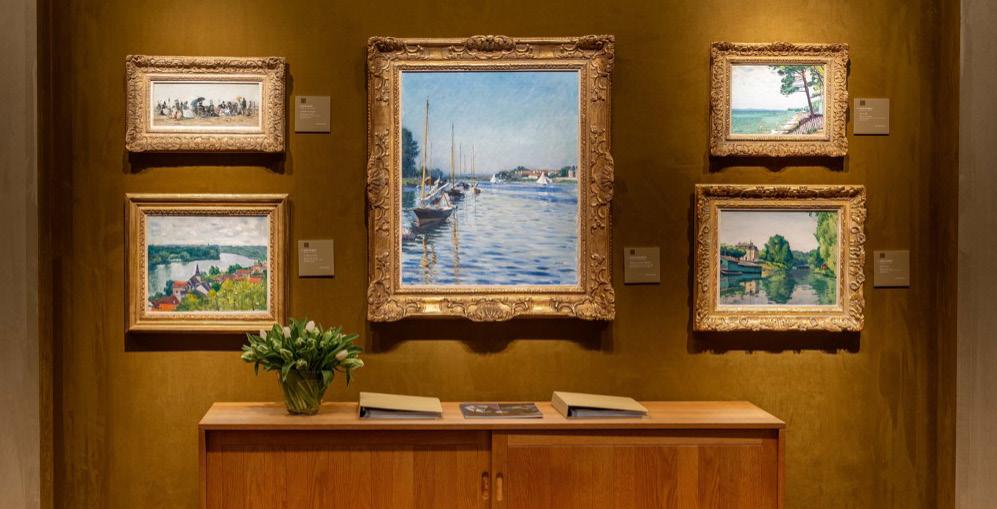 Jonathan Green, CEO, Richard Green
Jonathan Green, CEO, Richard Green
Richard Green is delighted to sponsor the updated edition of Harold Harvey: Painter of Cornwall, which accompanies the forthcoming exhibition, The Exceptional Harold Harvey at Penlee House & Gallery, Penzance from 1st May to commemorate the 150th anniversary of the artist’s birth. The gallery is lending two paintings to the exhibition; Unloading the catch, Newlyn, 1905 and Carrying the oars, 1906. We have also recently purchased Harvey’s Whiffing, Newlyn, 1907, newly discovered in a private American collection and previously owned by the department store, Gimbels, New York. Peter Risdon, co-author of the Harvey monograph and comprehensive catalogue raisonné, has kindly written about the painting for us, which you can read here.
In other museum exhibition news, this spring the gallery is looking forward to lending flowerpieces by Cedric Morris, including Still life with Irises, 1962, to Gainsborough’s House from July for Revealing Nature: The Art of Cedric Morris and Lett-Haines. Cedric and Lett founded the East Anglian School of Painting and Drawing not far from Gainsborough’s House originally in Dedham before moving to Benton End in Hadleigh in 1939. Today Morris is best known for his flower paintings, particularly of irises. He also an enthusiastic plantsman and noted Iris breeder.
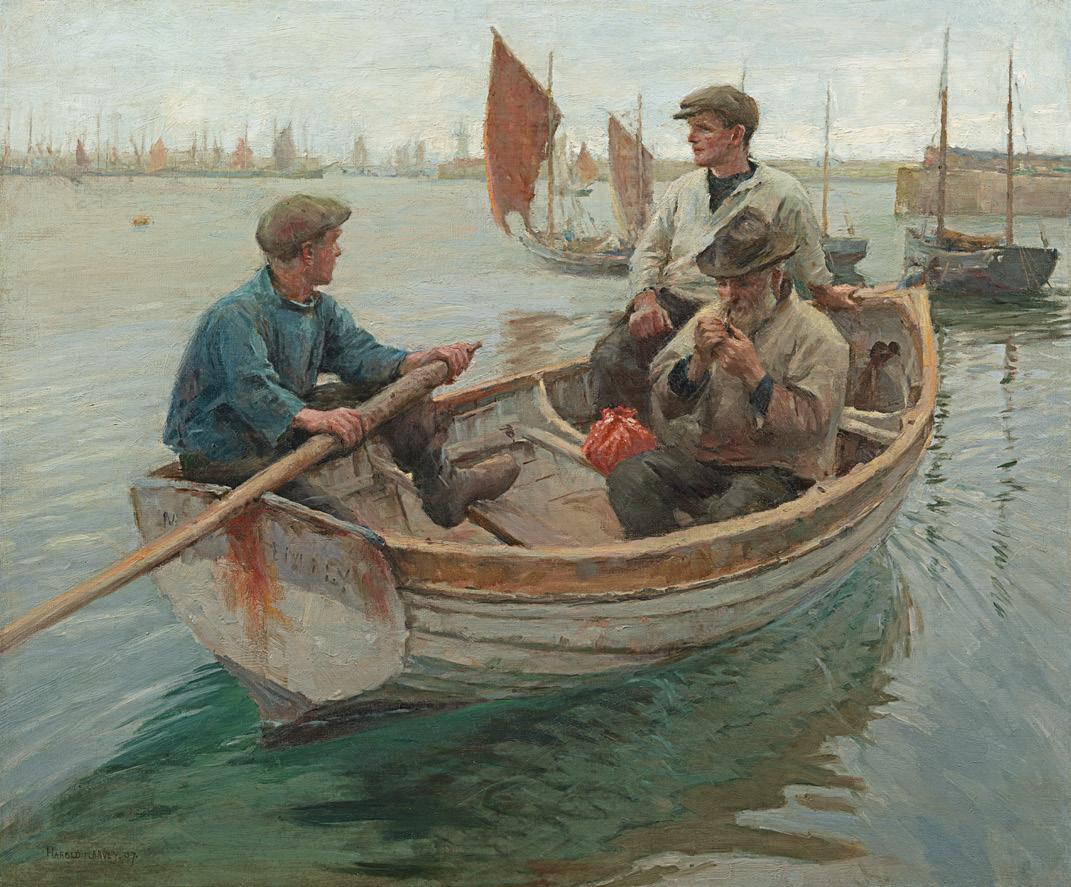

Lavery has returned to Belfast for the second stage of his important retrospective, Lavery On Location. You can read art historian and Lavery expert, Kenneth McConkey’s article about the artist and exhibition, which features Richard Green’s A southern sea, this week for Art UK.
 Harold Harvey, Whiffing Newlyn, 1907
Sir Cedric Morris, Still life with Irises, 1962 Will be exhibited at Gainsborough’s House
Sir John Lavery, A southern sea, 1910 On loan to Ulster Museum, National Museums NI
Harold Harvey, Whiffing Newlyn, 1907
Sir Cedric Morris, Still life with Irises, 1962 Will be exhibited at Gainsborough’s House
Sir John Lavery, A southern sea, 1910 On loan to Ulster Museum, National Museums NI
